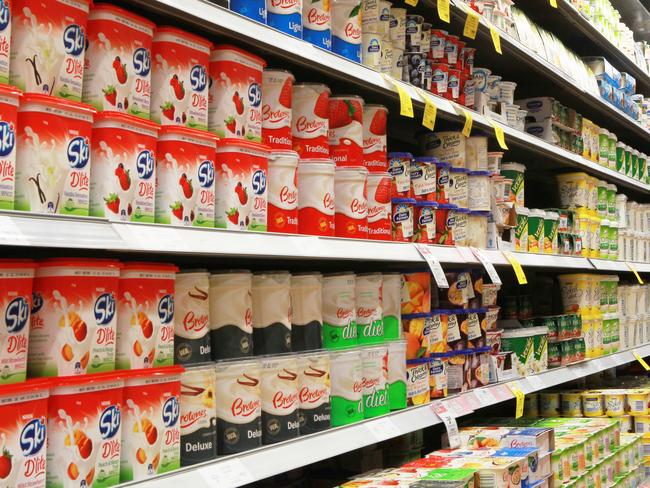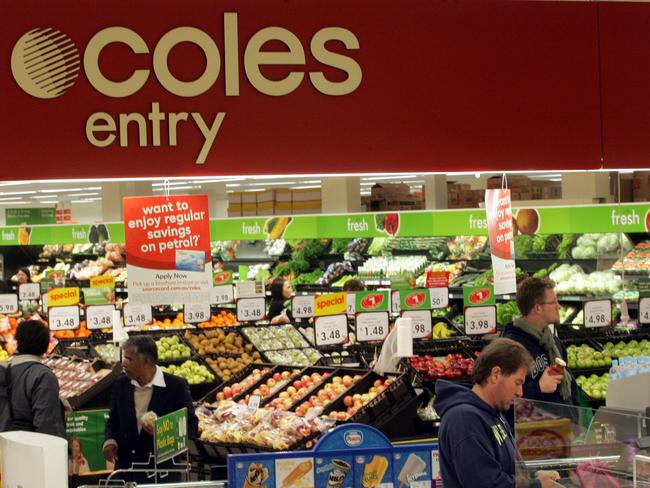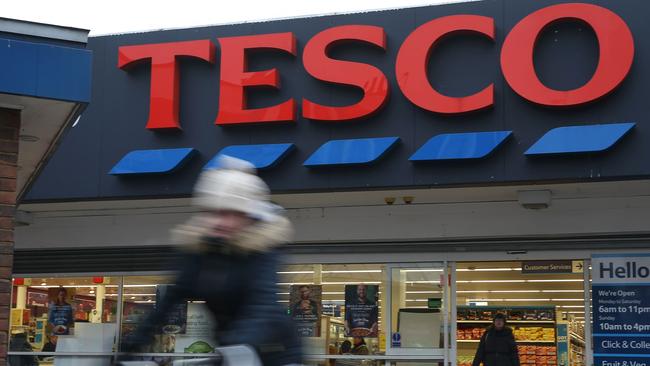Could Australian supermarkets introduce e-pricing?
POPPING to Coles or Woolies for a cheap lunch could be a nasty shock if the supermarkets adopt this surge pricing trend that’s taking off.
UBER’s surge pricing has changed the way we pay for short trips, but what if supermarkets were to do the same for groceries?
Changes afoot in the UK to scrap fixed prices, giving supermarkets more power to hike up the cost of products from hour to hour based on demand, could be adopted here in Australia.
Tesco and Sainsbury’s in the UK will implement electronic “Uber-style” pricing within the next five years, according to reports, giving them the power to jack up prices by as much as 90 per cent during the lunch rush, the traditional Sunday evening grocery shopping peak and on public holidays.
Digital e-pricing is already common across Europe and America, and retail company Coop Norden in Denmark has found it has saved costs and increased efficiency.
University of Melbourne consumer psychologist Brent Coker predicts Aussie supermarkets would implement the electronic pricing about 12 months after the UK, describing it as the way of the future for grocery retailers here.
Paper tickets on shelves would be replaced with digital LCD screens that could be changed remotely, and shoppers would be forced to change their habits in order to reap the benefits.
“There’s a learning curve with consumers,” Dr Coker told news.com.au.
“Now, people are used to going to do the supermarket shop at 5pm on a Sunday and that’s their routine. With e-pricing, there might be a spread of customer purchasing behaviour as they come to realise shopping during the Sunday night peak hour might not be cost effective.
“They might have to start shopping on a Monday afternoon.”
Retail analyst at Retail Oasis, Pippa Kulmar, told news.com.au said supermarkets in Australia had been slow to adopt new technology, but the surprise move by retail behemoth Amazon this month to buy up grocery chain Whole Foods ahead of its move to Australia was a wake-up call. Amazon was likely to become a massive player in the fresh food market within five years, she said. E-pricing would reduce ticket printing costs and staff could be used more efficiently because they would not be spending time updating shelf tickets.
“I think it’s a good move, just on a whole to be more efficient,” she told news.com.au
“A lot of supermarkets price match so supermarkets like Woolies and Coles will be able to react quickly and price against each other.
“Tesco probably looked at what AmazonGo is doing and they know it’s growing in the UK and going more into fresh food. They realised they needed to up their game but it’s not about the consumer, but what others are doing,” she said.
“Businesses don’t change until the compeition changes.”
Ms Kulmar said in the next five years there will be a shake up in the fresh food space in Australia and she expects supermarkets to adopt e-pricing and faster delivery.

HOW WILL IT AFFECT SHOPPERS?
In Australia, Dr Coker said e-pricing could be an advantage to consumers — but he doesn’t believe shoppers would see it that way to begin with.
“Over time people will begin to accept it as part of life, much like they have with petrol stations. They know prices are adjusting but they give up in the end because they need gas,” he said.
In the UK, supermarket chains Tesco, Sainsbury’s and Morrisons were working on plans to implement the digital ticketing system, The Telegraph reports, while Marks & Spencer trialled e-pricing last year to control the lunchtime rush. Its plan was to encourage people to buy lunch before 11am by upping prices during the lunch period.
And as for the grocery wars?
Dr Coker doesn’t believe e-pricing would change the face of competition between the major supermarkets like Woolworths and Coles, but it could give smaller chains an edge if the big two decided to take it up.
“Presuming all these supermarkets are using the same system, people won’t bother driving a bit further, or looking for a park if the pricing really isn’t that different,” he said.
“It could be enough to tip a consumer over to somebody who is offering a wholesome, old-school style of shopping that people might prefer.”

A DATA GOLDMINE
Dr Coker said e-pricing would make it easier to gather information about customers and their purchasing power.
“Supermarkets could perfectly match the price to the demand and should be able to sell more units and make more profit,” he said.
“The main advantage for them is they can experiment and find the right price point, and do it faster. They can look at sale data and what price a product was when it sold the most units to consumers.”
E-pricing would also reveal where supermarkets were getting it wrong. If a product had been marked too high, it could be instantly adjusted and that would ultimately save consumers money. They could also grab a bargain if they were smart and took advantage of off-peak pricing.

“E-pricing combined with inventory control information and what’s being sold and what volume, which is gathered through the till data, prices can be adjusted according to the demand,” he said.
“It’s economics 101, you want to match prices with the demand. If people are lining up, the prices go up, if no one is there, the price goes down.”
Hotels and airlines had been using an e-pricing system on the internet for years, Dr Coker said.
“They use little tricks, they know when you’ve been looking and gone away and when you come back. Some of them can adjust the pricing based on how often you’ve been looking,” he said.
“You’ll find when you go back the pricing is higher because it wants you to hurry up and buy it.”
However, he said he did not expect e-pricing in supermarkets would be tailored to each individual person based on their activity.

A Coles spokesman said the supermarket was not considering installing e-pricing at this stage, instead focussing on its Every Day pricing strategy.
“As part of our commitment to lowering the cost of a weekly shop, Coles has more than 4000 products on Every Day pricing, so customers know they can get the same great value every time they come into our stores,” he said.
Woolworths did not respond to questions.
An Aldi Australia spokeswoman said: “At this stage, we have no plans to trial or implement digital price tags in any of our Australian stores.
“However, as we continue to expand in Australia, it is our priority to remain responsive to evolving consumer expectations.”
IGA did not immediately respond to requests for comment.



